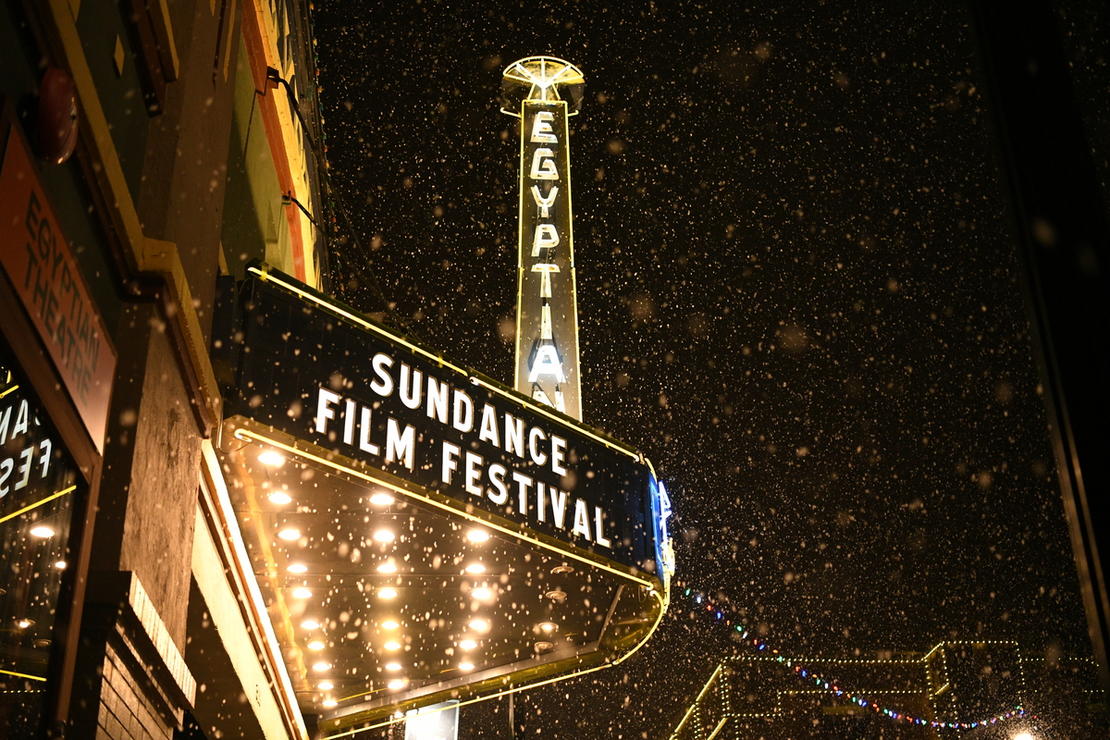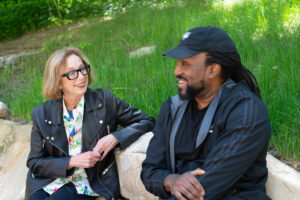©2020 Sundance Institute | Photo by Morgan Lieberman
Zan McQuade
It would be cliché to list all the films that have been transformed by their scores. You know the ones I mean: Jaws, Indiana Jones, Flash Gordon. BMI’s Sundance Film Festival roundtable discussion “Music and Film: The Creative Process” recognized the importance of a score to the film, and ingeniously brought together not just random composers and directors, but the composer-director pairs who had worked on many of this year’s Festival films.
Composer David Torn and director Adrian Grenier of Teenage Paparazzo, composer Michael Penn and director Anthony Burns of Skateland, composer Miriam Cutler and director Chico Colvard of Family Affair, composer Michael Mollura and director Michael Nash of Climate Refugees, composer MJ Mynarski and director Kevin Asch of Holy Rollers, composer Craig Hazen and director Leon Gast of Smash His Camera, and composers Peter Golub of Countdown to Zero and Craig Wedren of The Kids Are All Right.
Veteran composers George S. Clinton (Austin Powers)—who led the audience in a vocal warm-up before the panel, perhaps to emphasize what musical collaboration could be like, or maybe just because it looked like we could do with a little pepping up—and Alex Wurman (March of the Penguins) rounded out the panel.
The prime focus of the panel’s discussion was how the director and composer communicate with each other. Many of the directors expressed the difficulties of trying to explain what it was they wanted without having the musical vocabulary with which to explain themselves. George S. Clinton told the story of one director who, on hearing the orchestral score, told Clinton he wanted it louder.
“They can’t play any louder,” Clinton replied. “This is fortissimo.”
“Then I want them to play FIVEtissimo!” said the director.
Leon Gast talked about working with his composer Craig Hazen, how he would throw ideas to the composer based on songs he heard that he liked and felt right for the film. A little Ramones’ “I Wanna Be Sedated,” a little Jane’s Addiction’s “Jane Says,” and some Leonard Bernstein. And then, of course, he once asked for “more cowbell.”
Miriam Cutler and Chico Colvard talked about how important it is for the director to spend time with the composer so that they can understand each other’s vision.
The composers, in turn, expressed the difficulties of trying to fit their vision in with directors’ visions. Most panelists agreed that it’s important to be flexible, but also be convicted in what they believe the music should be. Kevin Asch gave the advice to directors to empower the composer to make the film their own.
David Torn noted: “We, composers, are also storytellers. We’re the last writer on the film.” Allowing for this extra voice was essential to the collaborative process.
Later that night at the BMI music party at Sundance House, I bumped into composers MJ Mynarski (who hoped I might be able to make public the fact that he was wearing sunglasses indoors because he lost his proper glasses in the cab, not because he’s that guy who wears sunglasses indoors at night) and Michael Mollura, and we talked about how great the panel was, how interesting it was to see collaborative efforts from both sides, and the different interpretations of the same process.
They’re all too aware of how intense and amazing these relationships can be. Even if once in a while they may require a little more cowbell.




